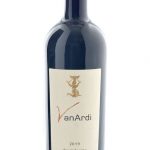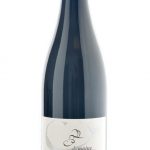 Cava is Spain’s answer to Champagne, although a case can be made for Cava offering more of a rebuke to Champagne than a retort. After all, Cava hails from a different climate and terroir than Champagne, and Cava is produced primarily or entirely from indigenous Spanish grape varieties such as Xarelo-lo, Parellada, Viura, and Macabeo, rather than the traditional French varietals inherent in Champagne. Naturally, all of this accounts for differences between Cava and Champagne, thereby rendering each nation’s sparkling wine unique. But then, there is also the difference in price. The vast majority of Cavas sell for under $20.00 a bottle. Is there much French Champagne available for half that price? Yet, like Champagne good Cava is produced by the same traditional method of fermentation in the bottle, and the end result is plenty of good drinking bubbly. The most compelling reason to drink Cava is simply this: Nobody makes better dry sparkling wine for the money than Spain’s Cava producers. With the addition of champagne yeasts during fermentation, the acid rich musts of Spanish Cava yield sparkling wines of rich flavor, softness and finesse that can at times rival those of Champagne. Where Cava may even have the “edge” on Champagne is in its soft, round, lingering finish – the antithesis of French Champagne which can often possess just a bit too much acidic verve in its aftertaste or finish to suit some tastes. Consequently, I enjoy Cava more often than Champagne because Cava is affordable, versatile, and appealing to a wide audience.
Cava is Spain’s answer to Champagne, although a case can be made for Cava offering more of a rebuke to Champagne than a retort. After all, Cava hails from a different climate and terroir than Champagne, and Cava is produced primarily or entirely from indigenous Spanish grape varieties such as Xarelo-lo, Parellada, Viura, and Macabeo, rather than the traditional French varietals inherent in Champagne. Naturally, all of this accounts for differences between Cava and Champagne, thereby rendering each nation’s sparkling wine unique. But then, there is also the difference in price. The vast majority of Cavas sell for under $20.00 a bottle. Is there much French Champagne available for half that price? Yet, like Champagne good Cava is produced by the same traditional method of fermentation in the bottle, and the end result is plenty of good drinking bubbly. The most compelling reason to drink Cava is simply this: Nobody makes better dry sparkling wine for the money than Spain’s Cava producers. With the addition of champagne yeasts during fermentation, the acid rich musts of Spanish Cava yield sparkling wines of rich flavor, softness and finesse that can at times rival those of Champagne. Where Cava may even have the “edge” on Champagne is in its soft, round, lingering finish – the antithesis of French Champagne which can often possess just a bit too much acidic verve in its aftertaste or finish to suit some tastes. Consequently, I enjoy Cava more often than Champagne because Cava is affordable, versatile, and appealing to a wide audience.





